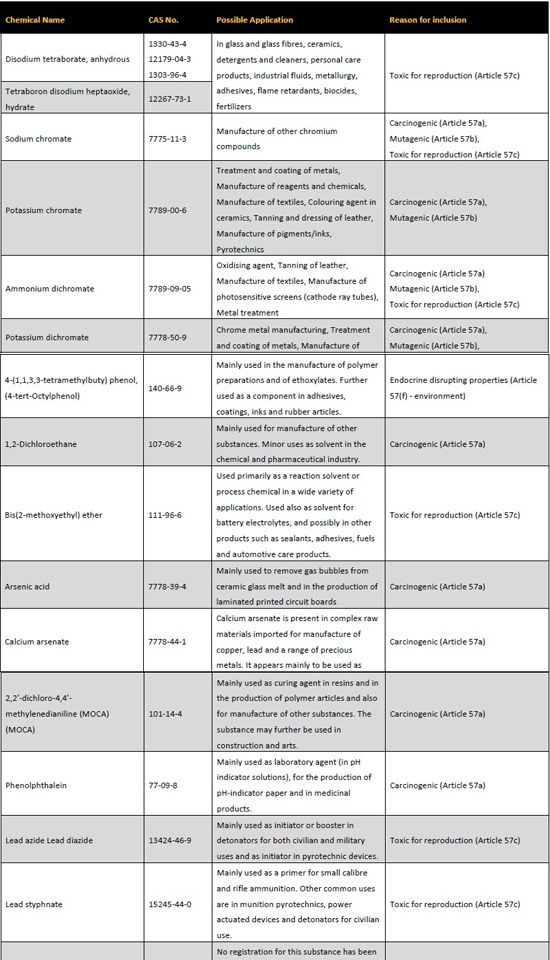Carcinogenic, mutagenic, toxic?! What industries and products may be involved in the latest <span>U</span>pdate 201 SVHCs?
According to a latest announcement of the European Chemicals Agency (ECHA) in July, another group of four substances are officially included in the candidate list of SVHC, being 4-tert-Butylphenol (PTBP), HFPO-DA, 2-Methoxyethyl acetate and TNPP. That adds up to 201 SVHCs to date.
Why are they listed as SVHCs?
Because these substances may be carcinogenic, mutagenic and toxic for reproduction (CMR), or persistent, bio-accumulative and toxic (PBT), or very persistent and very bio-accumulative (vPvB), or proved to bring serious harms to human beings and environment in real-life cases. Examples of such substances include the well-known lead, cadmium, BPA, nitrobenzene, arsenic trioxide (commonly known as arsenic), etc.
Have you heard of the other over 100 SVHCs?
“Who” are they?
Where can they come from?
What harms do they bring?
In production sector and daily consumption and life, these SVHCs are generally used in semi-finished or finished products, which will have effect on the products and manufacturing processes of almost all industries, from mining to textile, garment, hardlines and mechanical and electrical industries. Ultimately, it may affect end consumers’ health and environmental safety. To keep alerted of “invisible killers”, start from identifying their appearance. Intertek’s chemical experts are unveiling it for you now:

How to download
The above is only provides partial information.
To download a complete list of 201 SVHCs, please click here.
Pursuant to EU’s REACH regulation, an enterprise shall submit to ECHA the registration of chemical substances manufactured or imported into the EU exceeding 1 metric ton per year in quantities. Otherwise, the enterprise will be forbidden from continuing to manufacture, import or sell such chemical substances within the EU. In addition, the regulation specifies the requirement to continue to fulfill the obligation of assessment, notification/authorization and restriction for some registered substances.
According to the REACH regulation, chemicals are classified into “substances”, “mixtures” and “articles”. The one with the widest contact with most product manufacturers and consumers is “articles”. REACH defines an article as “an object which during production is given a special shape, surface or design which determines its function to a greater degree than does its chemical composition”. As “articles” may contain SVHCs provided in REACH, the obligation of conformity assessment shall be fulfilled. In other words, an SVHC test should be conducted on an article within or imported to the EU to determine whether the article contains any SVHC and decide on subsequent procedures of handling. That is also why an SVHC compliance test report is often required for products exported to the EU.
Contact windows to know more.
020-3210 2492
0755-2602 0099
021-5339 6228
022-8371 4973
The official WeChat of Intertek Hardlines is as below.

About Intertek
Intertek is a leading Total Quality Assurance provider to industries worldwide. Our network of more than 1,000 laboratories and offices and more than 100 countries, delivers innovative and bespoke Assurance, Testing, Inspection and Certification solutions for our customers’ operations and supply chains. Intertek Total Quality Assurance expertise, delivered consistently with precision, pace and passion, enabling our customers to power ahead safely.
www.intertek.com.cn
